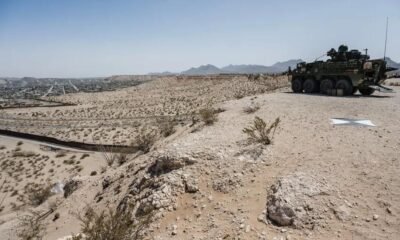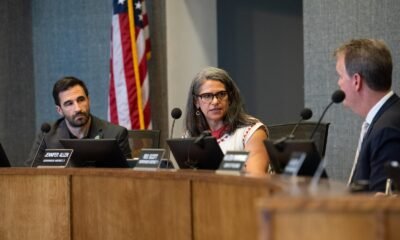border
Feds Set to Unveil 25-Mile Border Wall Project Near Coronado National Forest

U.S. Customs and Border Protection (CBP) is set to begin construction of nearly 25 miles of a new border wall in the San Rafael Valley, marking a significant move to address gaps left open during the previous administration. This new barrier will seal off a region recognized as a “biological hotspot” in Southern Arizona, situated just south of the Coronado National Forest in Cochise County.
Approximately 24.7 miles of primary border wall will be erected across a valley with protected grasslands, which has remained one of the few areas lacking a barrier. The initiative rises amid ongoing legal challenges and widespread public opposition. Notably, CBP had previously completed around 452 miles of border wall during the Trump administration, often cutting through ecologically sensitive landscapes within Arizona.
In 2019, the Sierra Club filed a lawsuit against the Trump administration regarding the expedited funding from the Defense Department for these barriers. According to a CBP representative, the agency may still consider amendments to existing agreements that govern border projects, especially near the Santa Cruz River and Coronado National Memorial.
This latest project near the Border Patrol’s Sonoita station aims to close the gap starting from Border Monument 102 and extending eastward. This monument marks the U.S.-Mexico border, located approximately 72 miles southeast of Tucson.
Environmental advocates, like Erick Meza from the Sierra Club, argue that the proposed wall represents an ecological disaster. “The San Rafael Valley serves as a vital wildlife corridor and home to endangered species such as the jaguar and black bear,” he stated. Meza emphasized that constructing the wall would disrupt wildlife migration patterns and exacerbate the decline of already vulnerable species.
The San Rafael Valley, designated as a state park since the late 1990s, is noted for its native grasslands and biodiversity. It sits at the headwaters of the Santa Cruz River and is cherished for its relatively untouched landscape. Past construction activities, including dynamite use to create access roads, have prompted local environmentalists to label these alterations as detrimental to the delicate ecosystem.
Despite these concerns, plans for new border wall projects continue. In late 2022, attempts to build makeshift barriers using shipping containers were thwarted after a combination of public activism and legal interventions against former Arizona Governor Doug Ducey’s initiative.
Fresh developments include a recent directive from Trump advocating for militarization along the border. This new provision allows the Defense Department to manage sections of the border easement, with the potential for military involvement in detaining migrants.
Additionally, CBP has reported plans to close various gaps across the Southwestern border, pointing to areas that have experienced significant migration. This includes projects aimed at filling vulnerable spots in Yuma County and Santa Cruz County, while also addressing gaps in California and New Mexico.
As apprehensions at the border have shifted, the need for these new constructions raises questions about the environmental and social implications of such actions. U.S. Border Patrol’s statistics indicate a decrease in apprehensions, prompting discussions around the efficacy and fiscal prudence of continued barrier construction.
Environmental regulations surrounding federal projects remain a contentious topic. While the Homeland Security secretary has the authority to waive certain environmental laws, past actions have drawn scrutiny from advocacy groups concerned about the preservation of sensitive ecosystems along the border.


















